The Tyrannosaurus rex, an iconic predator of the Late Cretaceous period, has captivated scientific and public imagination since its discovery. Among its many impressive attributes, T. rex possessed a remarkable ability that few modern animals demonstrate—the capacity to crush and consume bones. This practice, known as osteophagy, represents a specialized feeding behavior that required specific adaptations. Recent paleontological discoveries and biomechanical studies have revealed fascinating insights into how this apex predator could pulverize bones and extract nutritional value from them. This article explores the anatomical features that enabled T. rex’s bone-crushing abilities and examines why this feeding strategy remains relatively uncommon in both extinct and extant predators.
The Evolutionary Advantage of Bone-Crushing

Bone-crushing represents a significant evolutionary adaptation that provided T. rex with access to nutritional resources unavailable to many other predators. Within bones lie nutrient-rich marrow containing high concentrations of fat, protein, and minerals—essentially a caloric goldmine for any predator that could access it. For a massive animal like T. rex, which likely required enormous amounts of energy to sustain its 5-7 ton frame, the ability to extract every possible calorie from prey would have offered a substantial survival advantage. This feeding strategy allowed T. rex to utilize carcasses more completely than competitors, potentially sustaining it during periods when fresh prey was scarce. The evolutionary pressure to develop bone-crushing abilities likely intensified during resource-limited times, making this adaptation particularly valuable in the competitive ecosystem of the Late Cretaceous.
T. Rex’s Extraordinary Bite Force

At the core of T. rex’s bone-crushing capability was its unprecedented bite force, which research suggests was among the most powerful of any terrestrial animal in Earth’s history. Scientific studies using computer modeling and comparative anatomy have estimated that T. rex could exert between 35,000 and 57,000 newtons of force at its back teeth—equivalent to the weight of three small cars pressing down on a single point. This tremendous force resulted from a perfect storm of anatomical features: massive jaw muscles, a robust skull structure designed to withstand extreme pressures, and a deep, reinforced mandible. The bite force was further enhanced by T. rex’s relatively slow bite, which allowed it to build up maximum pressure before clamping down on bone. This combination of features created a biological bone-crushing machine unlike anything alive today, with a bite approximately ten times stronger than that of a modern alligator.
Dental Adaptations for Bone Processing

T. rex possessed specialized teeth that were perfectly adapted for crushing bone tissue. Unlike the blade-like teeth of many predatory dinosaurs, T. rex teeth were thick, robust, and somewhat rounded—more akin to railroad spikes than steak knives. Each tooth could measure up to 12 inches in length including the root, with a serrated edge that allowed for both slicing flesh and crushing harder materials. The teeth were deeply anchored in the jaw and reinforced with extra bone tissue to prevent breakage during powerful bites. Additionally, paleontologists have discovered that T. rex teeth possessed a unique internal structure with increased dentine thickness and specialized enamel distribution that prevented cracking when encountering hard surfaces. Perhaps most important was the heterodont dentition—different teeth shapes throughout the jaw—with the rear teeth being particularly thick and blunt, specialized for crushing bone while the front teeth were better suited for gripping and tearing flesh.
Skull Architecture Supporting Massive Forces

The T. rex skull represented a masterpiece of natural engineering specifically designed to withstand the enormous forces generated during bone-crushing. Unlike many predatory dinosaurs with lightweight, fenestrated skulls optimized for speed, T. rex evolved a massively reinforced cranium with thickened bone in key stress areas. The skull featured a series of reinforcing struts and ridges that distributed bite forces throughout the structure, preventing fractures during powerful biting. Computer modeling studies have revealed that the T. rex skull could flex slightly during biting, absorbing energy rather than cracking under pressure. Particularly notable was the robust attachment site for jaw muscles at the back of the skull, where prominent ridges and crests anchored tremendous musculature. This architectural arrangement created a skull capable of withstanding the extreme stresses generated when crushing through the thick cortical bone of large dinosaur prey—an adaptation few other predators have ever achieved throughout evolutionary history.
Jaw Mechanics and Specialized Musculature
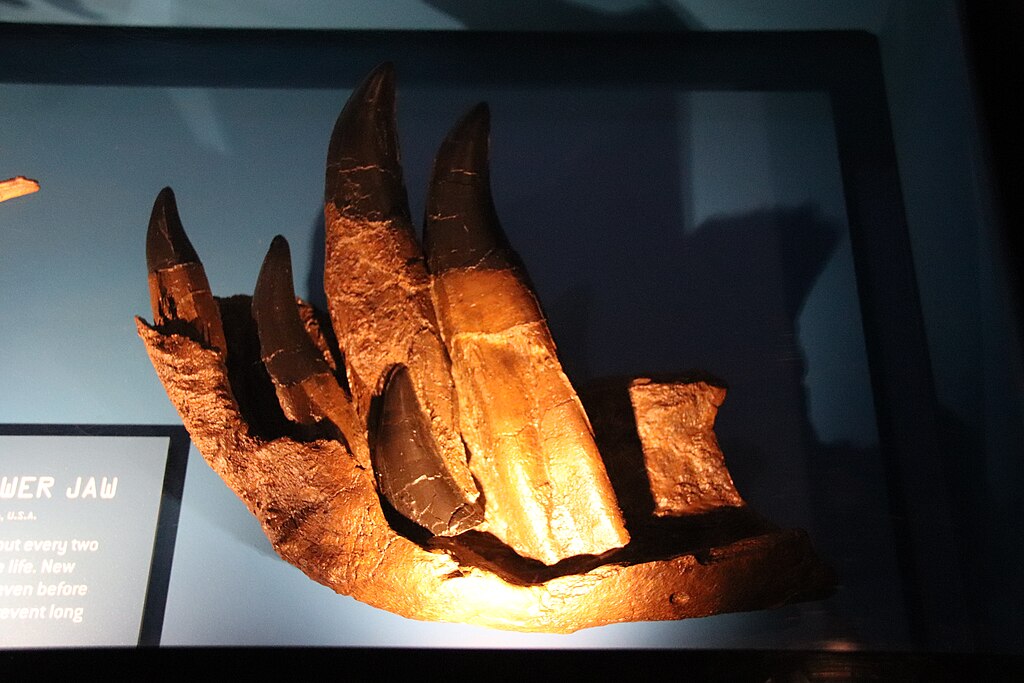
T. rex possessed jaw mechanics specifically optimized for generating and withstanding bone-crushing forces. The dinosaur’s jaw muscles were extraordinarily massive, with attachment sites suggesting musculature that would have given the head a much bulkier appearance than typically depicted in early reconstructions. These muscles—particularly the temporalis and masseter complexes—were positioned to maximize mechanical advantage when the jaws closed. Unlike many modern predators that rely on quick, snapping bites, T. rex likely employed slower, more powerful jaw closure that built tremendous pressure. The jaw joint itself was reinforced to handle these forces without dislocation, featuring a deeply socketed articulation point. Additionally, studies of muscle scars on T. rex fossils suggest the presence of specialized stabilizing muscles that prevented the jaw from shifting laterally during powerful bites. This entire mechanical system worked in concert to deliver controlled, devastating pressure to bones caught between its teeth.
Evidence from Fossil Coprolites
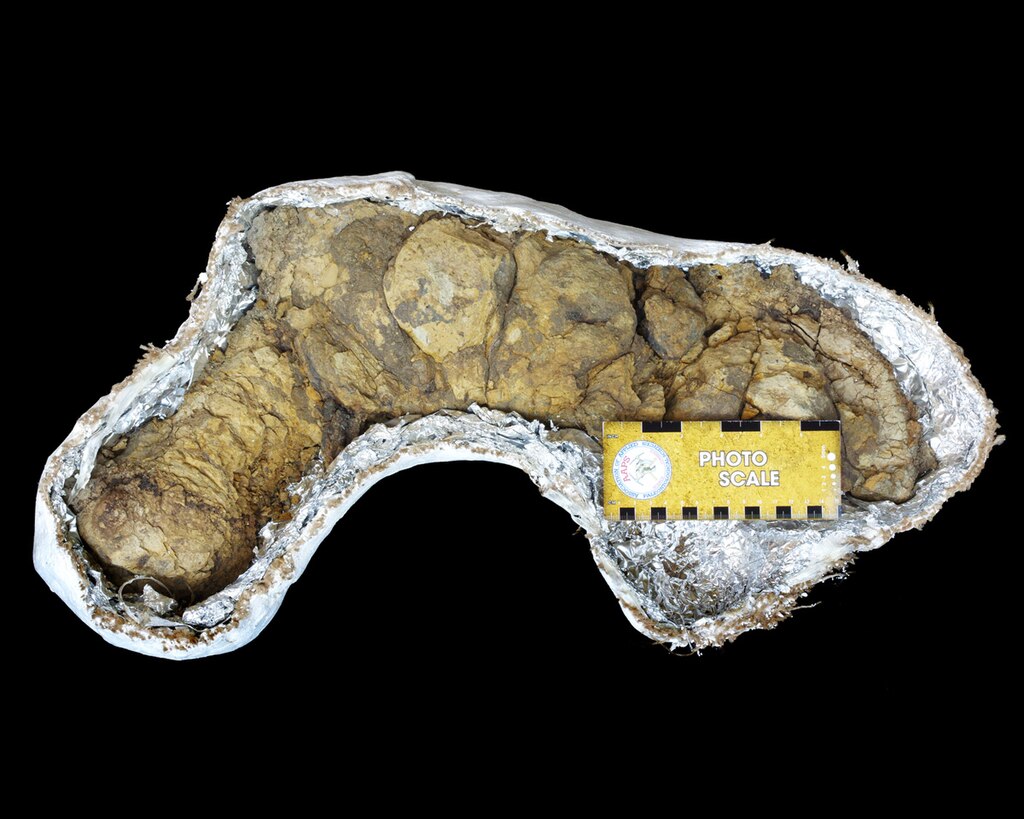
Some of the most compelling evidence for T. rex’s bone-crushing abilities comes from fossilized fecal matter, or coprolites, attributed to this species. These remarkable fossils contain dense concentrations of bone fragments that have been highly processed through the digestive system, indicating the bones were first crushed by the teeth rather than swallowed whole. Microscopic analysis of these coprolites reveals bone fragments with distinctive crushing patterns that match the dental arrangement of T. rex. The fragments show characteristic fracture patterns consistent with high-pressure crushing rather than cutting or slicing. In some particularly well-preserved specimens, researchers have identified bone fragments from multiple prey species, suggesting T. rex regularly processed bones as part of its feeding strategy. The density of bone material in these coprolites exceeds what is typically found in the fecal matter of modern carnivores that occasionally consume bone, indicating T. rex was specifically targeting bone tissue as a nutritional resource rather than incidentally ingesting it while feeding.
Tooth Wear Patterns Revealing Feeding Behavior
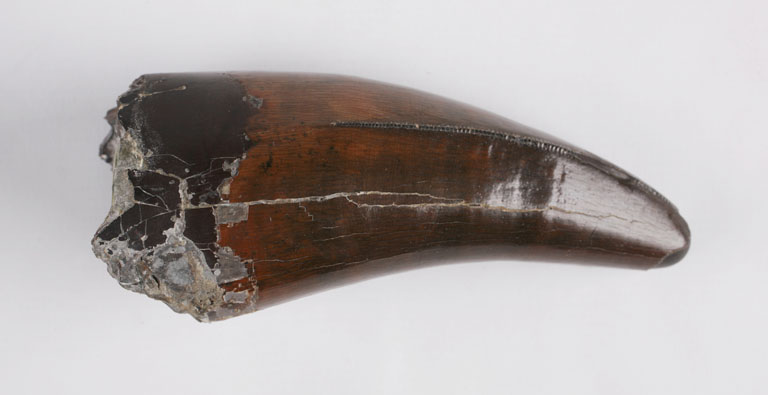
The examination of wear patterns on fossilized T. rex teeth has provided critical insights into how these predators interacted with bone during feeding. Microscopic analysis reveals distinctive abrasion marks that could only be produced by regular contact with hard substances like bone. These wear patterns differ significantly from those seen in dinosaurs that primarily consumed soft tissues. Particularly telling are the polished, flattened surfaces found on many T. rex teeth, indicative of regular bone contact under immense pressure. Some recovered teeth show microscopic fractures and repairs, suggesting the teeth were regularly pushed to their structural limits during feeding. Studies comparing these wear patterns to those of modern bone-crushing specialists like spotted hyenas reveal remarkable similarities, despite the vast evolutionary distance between these animals. The distribution of wear across different teeth also indicates T. rex used different parts of its jaw for different feeding functions—with posterior teeth showing more bone-related wear than anterior teeth.
Bite Marks on Fossil Prey
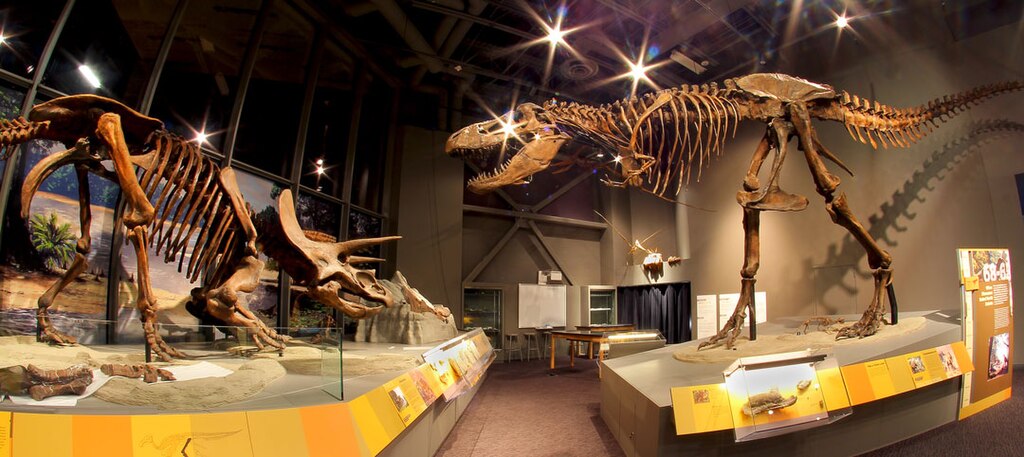
The fossil record provides direct evidence of T. rex’s bone-crushing feeding behavior through distinctive bite marks preserved on prey remains. Paleontologists have identified numerous fossils bearing the characteristic puncture and crush marks that match T. rex dental patterns. These marks frequently show bone that has been compressed and fractured under enormous pressure, with distinctive “pull” marks indicating where the predator dragged its teeth through resistant bone tissue. Particularly telling are fossils showing repeated bite marks in the same area, suggesting T. rex would bite multiple times to process tough bone material. Some hadrosaur and ceratopsian fossils display bite marks penetrating several centimeters into dense cortical bone—a feat requiring extraordinary force. In several cases, researchers have found healed bite marks on prey animals, indicating that even T. rex’s bone-crushing bites weren’t always immediately fatal, though they clearly demonstrate the dinosaur’s capacity to apply tremendous force to bone during predation or scavenging events.
Rarity of Bone-Crushing in Nature
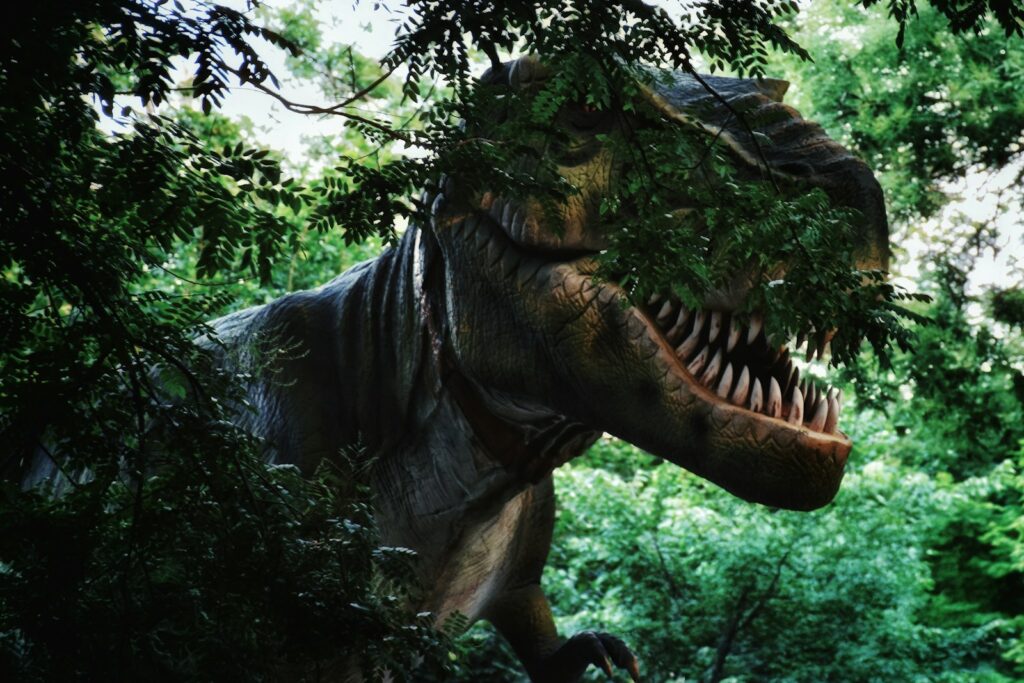
Despite the obvious nutritional benefits, true bone-crushing ability remains remarkably rare among both extinct and living predators. This rarity stems from the extreme specialization required to effectively process bone tissue. Modern bone-crushing specialists like spotted hyenas represent a tiny fraction of carnivorous mammals, having evolved highly specific dental, cranial, and digestive adaptations over millions of years. The scarcity of this adaptation relates to the significant evolutionary investment required—developing increased bite force typically necessitates larger head size, stronger neck muscles, and reinforced skull architecture, all of which come with energetic costs and potential trade-offs in areas like speed and agility. Additionally, specialized bone-crushing dentition is less effective for processing soft tissue, potentially reducing feeding efficiency during normal predation. These evolutionary constraints explain why most predators, despite occasionally consuming some bone material, never develop true bone-crushing specialization. T. rex’s evolution of this rare ability speaks to the unique ecological niche it occupied and the specific selection pressures it faced during the Late Cretaceous period.
Modern Bone-Crushers: Hyenas and Beyond

Among living animals, spotted hyenas represent nature’s premier bone-crushing specialists, offering valuable insights into this feeding strategy through direct observation. These remarkable mammals can exert bite forces exceeding 9,000 newtons—immense for their size but still far below T. rex capabilities. Hyenas possess conical premolar teeth specifically adapted for bone-crushing, along with massively reinforced skulls and powerful neck muscles to withstand the forces involved. Their digestive systems have also specialized, producing highly acidic stomach environments capable of breaking down bone fragments and extracting minerals. Beyond hyenas, limited bone-crushing abilities appear in some canids like wolves and dholes, though to a lesser degree. Certain crocodilians demonstrate impressive bite forces that can crack bones, though they typically swallow prey chunks whole rather than methodically processing bone material. Among birds, bearded vultures have evolved the unusual behavior of dropping bones from heights to crack them open, a mechanical solution to accessing marrow without requiring specialized bite force.
Nutritional Benefits of Osteophagy
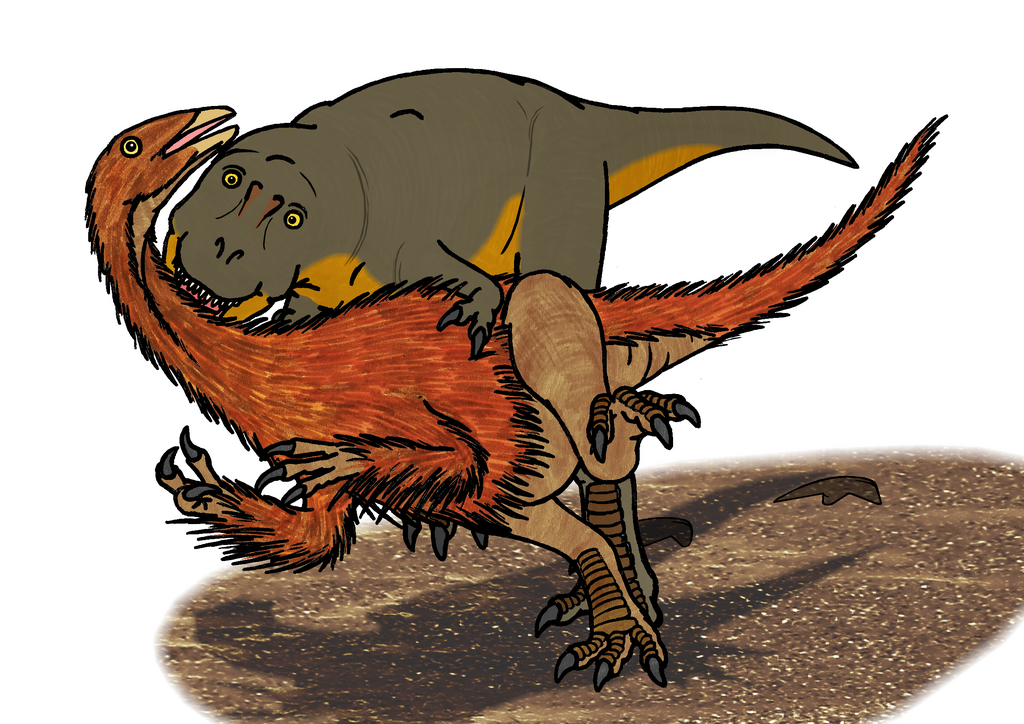
The practice of osteophagy—bone consumption—provided T. rex with access to highly concentrated nutritional resources unavailable to non-bone-crushing predators. Bone marrow represents one of the richest energy sources in a carcass, containing high levels of fatty acids, including beneficial omega-3s and omega-6s, along with fat-soluble vitamins like A, D, E, and K. The mineral component of bones, primarily calcium phosphate, would have provided critical nutrients for maintaining T. rex’s own massive skeleton and potentially supporting egg production in females. Beyond marrow, bone tissue itself contains collagen protein which, though difficult to access, represents another potential energy source. Studies of modern osteophagy specialists like hyenas show they can extract approximately 3,500 additional calories from a single zebra carcass by processing the bones after other predators have consumed the more accessible tissues. For a massive predator like T. rex with enormous energy requirements, these additional calories would have provided a significant survival advantage, particularly during periods of resource scarcity or intense competition.
Competing Theories About T. Rex Feeding Behavior

While evidence strongly supports T. rex’s bone-crushing capabilities, scientific debate continues regarding how central this behavior was to its overall feeding strategy. Some paleontologists argue that bone-crushing represented an occasional behavior, employed primarily when scavenging or during food scarcity, rather than a regular feeding tactic. Others suggest it was a fundamental aspect of T. rex ecology, pointing to the extensive anatomical specializations that would be unlikely to evolve for an occasional behavior. The scavenger-versus-predator debate further complicates this picture, with some researchers proposing that bone-crushing was more important if T. rex was primarily a scavenger utilizing partially consumed carcasses. Recent studies of tooth wear patterns and bite marks suggest a middle ground—T. rex likely employed different feeding strategies depending on opportunity and need, using its bone-crushing abilities tactically rather than indiscriminately. Computer modeling of feeding biomechanics has demonstrated that juvenile T. rex specimens lacked the skull reinforcement for significant bone-crushing, suggesting this ability developed as the animals matured and potentially indicating a shift in feeding strategy throughout their lifespan.
Evolutionary Development of Bone-Crushing Ability

The remarkable bone-crushing adaptations observed in T. rex didn’t appear suddenly but evolved gradually through its tyrannosaurid lineage. Examination of earlier tyrannosaurids reveals a progressive development of features supporting increased bite force and bone processing. Early forms like Proceratosaurus and Dilong possessed more typical theropod dental arrangements, with laterally compressed, blade-like teeth unsuitable for significant bone-crushing. Middle tyrannosaurids such as Albertosaurus and Gorgosaurus show intermediate adaptations—thicker teeth and reinforced skulls, but not to the extreme seen in T. rex. The distinct bone-crushing specialization appears to have reached its peak in the largest tyrannosaurids—T. rex and Tarbosaurus—suggesting a correlation between body size and bone-crushing adaptation. This evolutionary progression likely responded to specific environmental pressures in the Late Cretaceous ecosystems of North America, possibly including increased competition for carcasses or nutritional advantages during seasonal scarcity. Fascinatingly, this represents a case of convergent evolution with mammalian bone-crushers like hyenas, which evolved similar adaptations independently tens of millions of years later.
Implications for Understanding Prehistoric Ecosystems

T. rex’s bone-crushing abilities provide critical insights into the structure and function of Late Cretaceous ecosystems. As an apex predator capable of processing carcasses more thoroughly than other carnivores, T. rex likely played a unique role in nutrient cycling within its environment. By breaking down bones that might otherwise persist for decades, T. rex accelerated the return of calcium and phosphorus to the soil, potentially enhancing overall ecosystem productivity. This feeding specialization also suggests a particular ecological niche separation between T. rex and other large theropods, potentially reducing direct competition through resource partitioning. The bone-crushing adaptation further implies certain characteristics about prey availability and composition in these ancient ecosystems, suggesting either periods of scarcity that made complete carcass utilization advantageous or particular prey types with high bone-to-meat ratios. Understanding T. rex’s place as a bone-processor helps paleontologists reconstruct not just the animal itself, but the complex web of interactions that defined its world—providing a more complete picture of how these extinct ecosystems functioned and how they differ from modern analogues.
In conclusion, T. rex’s remarkable ability to crush bones represents one of the most specialized feeding adaptations in dinosaur evolution. This capability emerged from a perfect combination of extraordinary bite force, specialized dental architecture, reinforced skull structure, and powerful jaw musculature. Despite the clear nutritional advantages of accessing bone marrow and minerals, true bone-crushing remains surprisingly rare in nature due to the significant evolutionary investment required. The evidence preserved in fossils—from tooth wear patterns to coprolites to bite marks on prey—paints a picture of a predator that could extract maximum nutritional value from its kills or scavenged finds. This adaptation not only helped T. rex thrive as one of history’s most formidable predators but also shaped the ecological dynamics of its ancient environment. As we continue to study this fascinating aspect of T. rex biology, we gain deeper insights into both the capabilities of this iconic dinosaur and the complex evolutionary pressures that shaped prehistoric ecosystems.



